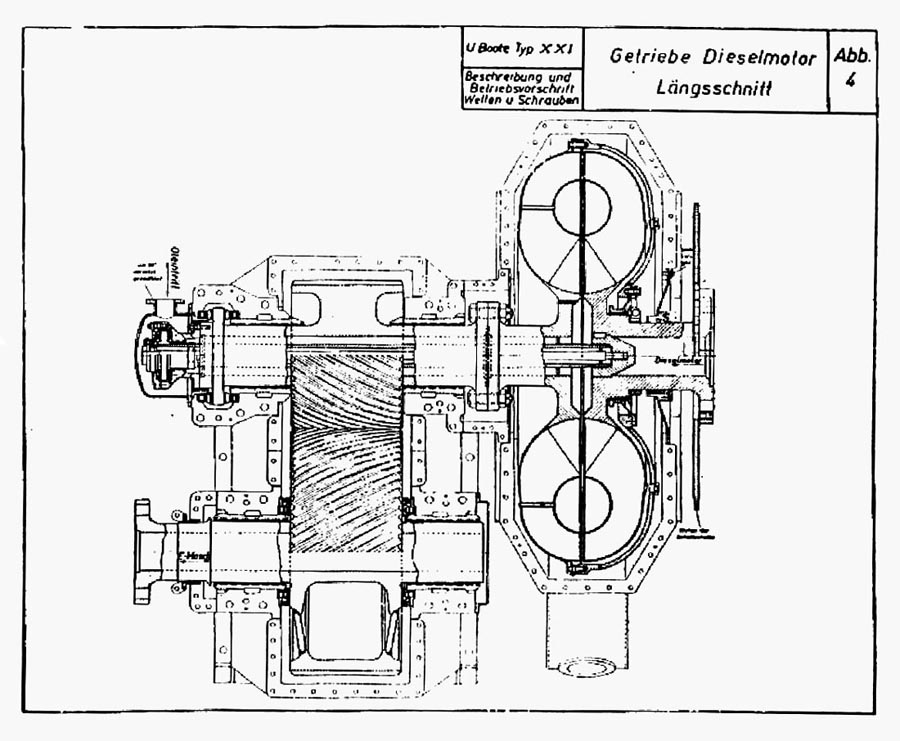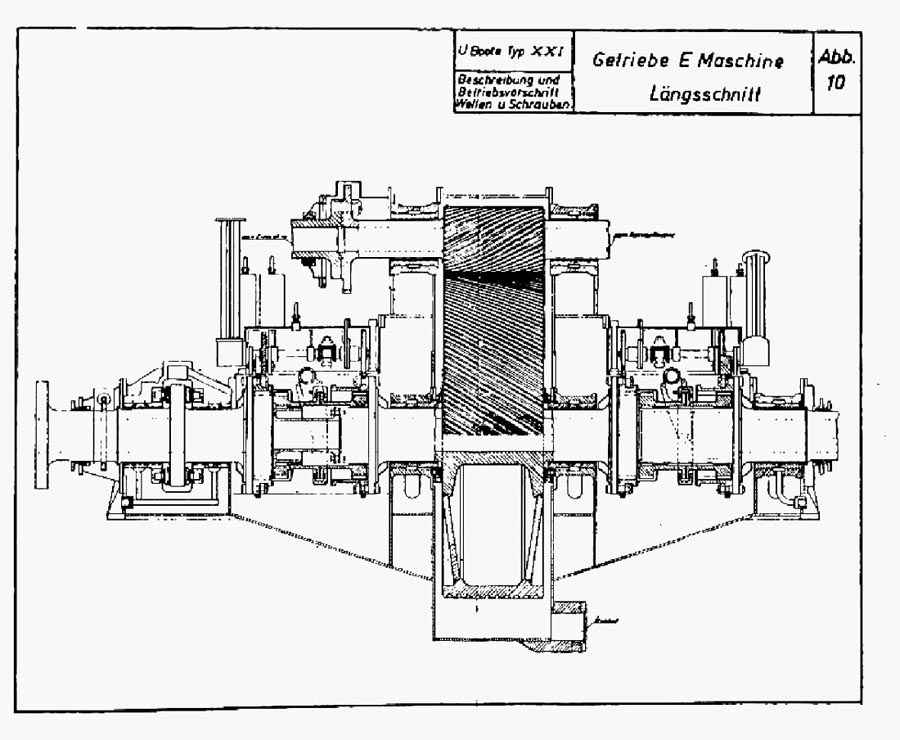|
|||||
FORMER GERMAN SUBMARINE TYPE XXI |
|||||
MAIN REDUCTION GEARS |
|||||
SUMMARY |
|||||
| Two sets of helical type reduction gears for use with the main motors and the diesel engines respectively, and one set of V-belt drives for use with the creeping motors are installed on the XXI. Previous types have had direct drive propulsion units with no gears or belts. Disregarding space considerations, the arrangement of the reduction gears appears unnecessarily complicated. | |||||
| Although considerable maintenance and adjustment is required on the V-belt pulley drives, they provide the desired quiet transmission of power from the creeping motor to the main propelling shaft. | |||||
April, 1946 |
|||||
PORTSMOUTH NAVAL SHIPYARD, PORTSMOUTH, N. H. |
|||||
- 1 - |
|||||
|
||||||||||||||||||||||||||||||||||||||||||||||||||||||||
MAIN REDUCTION GEARS |
||||||||||||||||||||||||||||||||||||||||||||||||||||||||
| 1. INTRODUCTION | ||||||||||||||||||||||||||||||||||||||||||||||||||||||||
| Considerable detailed information on German reduction gear design and manufacturing practices is contained in NavTechMisEu Technical report 357-45. In this report only a general coverage of the subject will be made to analyze the design features of the reduction gears on the Type XXI. | ||||||||||||||||||||||||||||||||||||||||||||||||||||||||
| 2. GENERAL DESCRIPTION | ||||||||||||||||||||||||||||||||||||||||||||||||||||||||
| The diesel engine and main motor reduction gears are shown on Plates I and II respectively. Specific data on these gears is listed below: | ||||||||||||||||||||||||||||||||||||||||||||||||||||||||
|
||||||||||||||||||||||||||||||||||||||||||||||||||||||||
| Oil pressure at 1.5 "atu" (approx. 21 psi) is used for lubrication. This is furnished for both gears by a standby gear oil pump prior to running, and by an attached pump on the main motor pinion shaft when the gears are in | ||||||||||||||||||||||||||||||||||||||||||||||||||||||||
- 2 - |
||||||||||||||||||||||||||||||||||||||||||||||||||||||||
|
||||||||||||||||
| operation. | ||||||||||||||||
| The thrust of the main gears is taken by thrust shoes that bear on the forward and after surfaces of the gears. The pinion thrust is taken by thrust collars on the pinion shafts. A separate thrust collar to restrict movement of the Vulcan coupling is attached to the inner pinion shaft of the diesel reduction gear. | ||||||||||||||||
| The V-belt drive is shown on plate III. Twelve individual leather V-belts are used. The tension of these belts can be readily adjusted. Considerable care is required in order to maintain equal tension on all belts under varying loads, and after prolonged periods of running. Insufficient belt tension and improper condition of the pulley surfaces can result in slippage of the belts, at time producing excessive noise. The V-belts normally remain idle (creeping motor clutch disengaged) when using propulsion from the main motor or the diesel engine. Specific data on the design of this drive is listed below: | ||||||||||||||||
|
||||||||||||||||
| 3. CONCLUSIONS | ||||||||||||||||
| The main reduction gears are standard in nature and offer nothing unique in their design. Herringbone gears are considered more satisfactory than the helical gears used on this type. Also, it would appear that both speed reductions could have been obtained in one gear with no loss in flexibility or propelling characteristics. | ||||||||||||||||
| The V-belt drive employed for the creeping motor is a satisfactory means for transmitting a low amount of power with a minimum of noise. However, considerable maintenance is required to retain maximum quiet power transmission. | ||||||||||||||||
- 3 - |
||||||||||||||||

